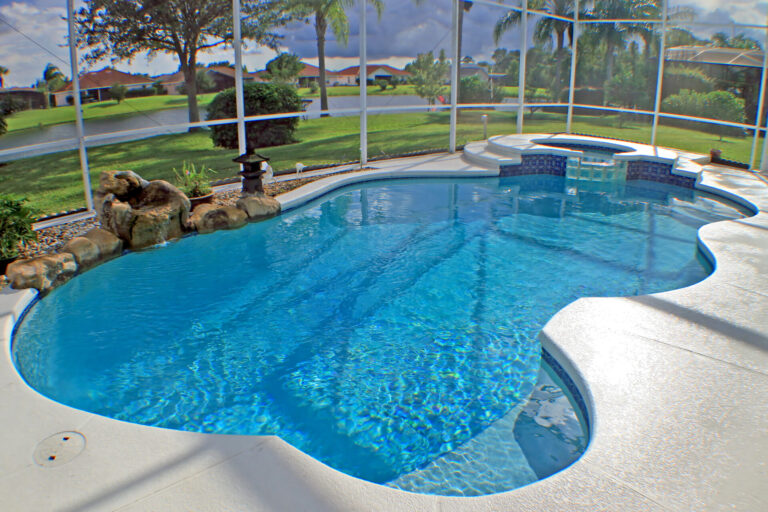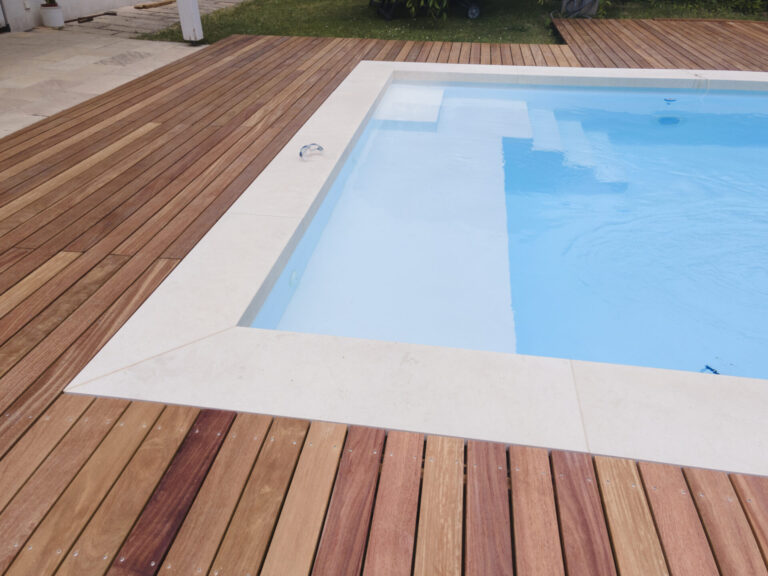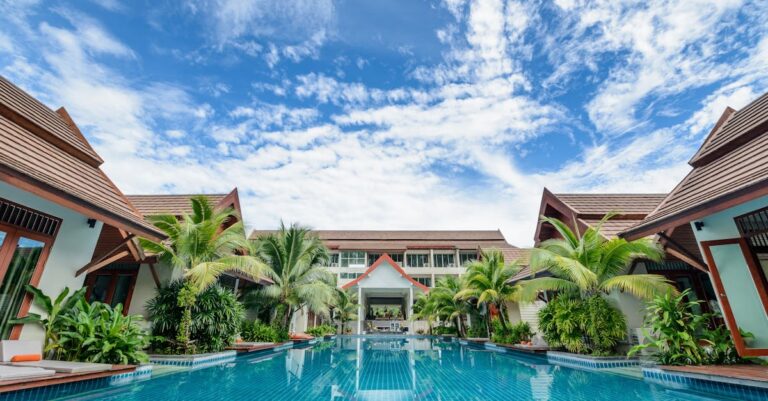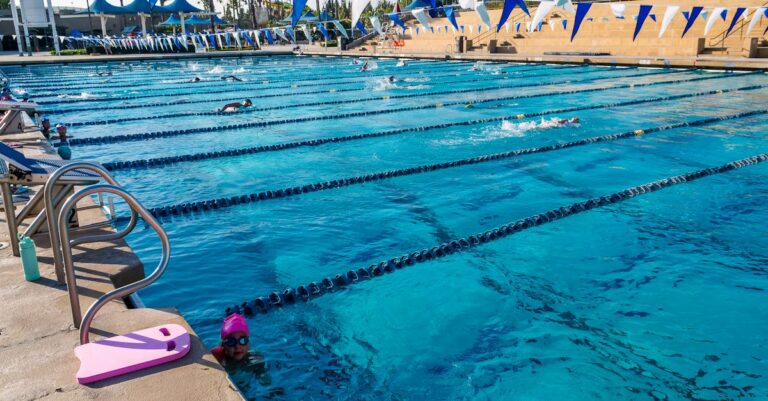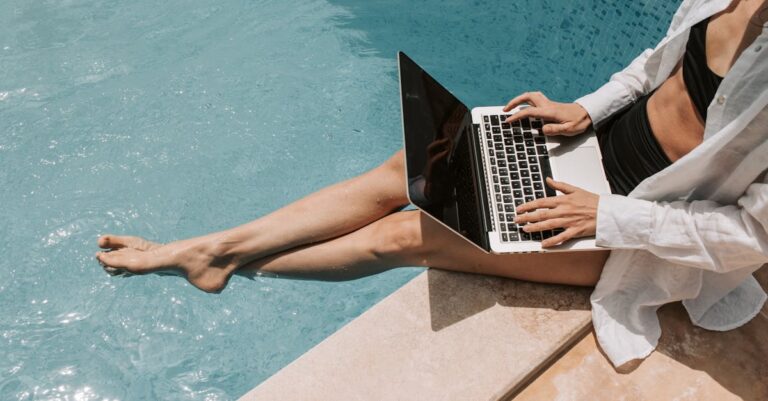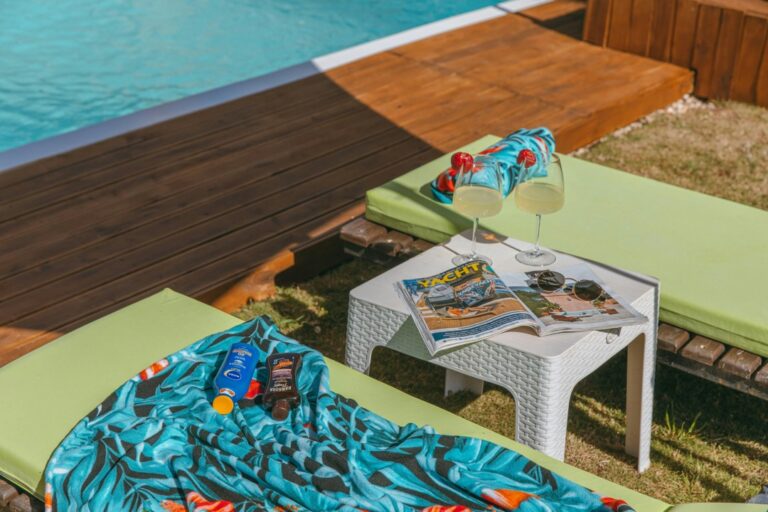11 Above Ground Pool Heat Retention Tips That Cut Energy Costs
Discover proven strategies to keep your above ground pool warm longer: from solar covers and heat pumps to smart positioning and equipment upgrades that maximize heat retention efficiently.
Keeping your above ground pool at the perfect temperature can be a constant battle especially during cooler months or chilly nights. You’ll need effective heat retention strategies to maintain comfortable swimming temperatures while keeping your energy bills in check. Whether you’re using a pool heater solar cover or other heating methods maximizing heat retention is key to extending your swimming season and getting the most enjoyment from your investment.
Swimming in a warm pool shouldn’t drain your wallet or waste energy. Smart heat retention techniques can help you maintain ideal water temperatures without constantly running your pool heater at full capacity. These proven methods will help you create an energy-efficient swimming environment that stays warmer longer throughout the season.
Disclosure: As an Amazon Associate, this site earns from qualifying purchases. Thank you!
Understanding Heat Loss in Above Ground Pools
Above ground pools face unique heat retention challenges due to their exposed structure and surface area. Understanding these heat loss mechanisms is crucial for maintaining comfortable swimming temperatures.
Common Causes of Heat Loss
- Evaporation accounts for 75% of pool heat loss when water molecules escape from the surface into the air
- Wind exposure accelerates evaporation rates especially around pool edges
- Night temperature drops cause significant cooling as warm water releases heat into cooler air
- Ground contact transfers heat from pool bottom to soil beneath
- Equipment inefficiency like poorly insulated pipes leads to system heat loss
- Surface debris creates cold spots and disrupts thermal layers
- Thermal stratification creates natural temperature layers with warmest water at top
- Solar radiation provides 75-85% of natural pool heating during daylight hours
- Specific heat capacity of water requires significant energy to change temperature
- Humidity levels affect evaporation rates with higher humidity reducing heat loss
- Air temperature differential determines heat transfer rate between pool and atmosphere
- Conduction through pool walls impacts overall thermal efficiency
Installing a High-Quality Solar Pool Cover
A solar pool cover serves as your primary defense against heat loss while maximizing thermal energy absorption from the sun.
Choosing the Right Solar Cover Material
Select a solar cover with 400-500 micron thickness for optimal durability and heat retention. Blue or clear covers offer the best heat transfer with up to 85% solar energy absorption. Blue covers heat deeper water layers while clear covers allow more light penetration. Choose UV-stabilized materials with reinforced edges to prevent deterioration. Premium covers feature air pockets or bubbles that trap heat effectively while adding insulation value.
Proper Installation and Maintenance Tips
Place the cover bubble-side down for maximum heat retention and smooth surface contact. Trim the cover to leave a 3-inch gap around edges preventing pump strain. Use a roller system for easy removal and prevent dragging that can damage the material. Clean monthly with mild soap and soft brush to remove debris. Store in a cool dry place when not in use folded neatly without sharp creases. Check regularly for tears and patch promptly using manufacturer-approved repair kits.
Optimizing Your Pool’s Location and Surroundings
Strategic Placement for Maximum Sun Exposure
Position your pool where it’ll receive 6-8 hours of direct sunlight daily between 10 AM and 4 PM. South-facing locations offer optimal sun exposure in the Northern Hemisphere while maintaining a 10-15 foot clearance from trees. Install your pool away from shadows cast by buildings houses or tall structures that block sunlight during peak hours. Consider seasonal sun patterns when choosing your location as the sun’s path changes throughout the year.
Creating Windbreaks Around Your Pool
Install privacy screens lattice panels or wind barriers 4-6 feet high around your pool’s perimeter keeping them 3-4 feet from the pool edge. Plant evergreen shrubs like arborvitae cypress or holly in strategic locations to block prevailing winds while maintaining root distance from the pool structure. Use decorative fencing materials that complement your landscaping while serving as effective wind barriers. Position portable screens during windy conditions to provide additional protection from heat-stealing gusts.
Enjoy fast and reliable internet with this Holly Wi-Fi adapter, featuring dual-band technology for reduced interference and speeds up to 1200Mbps. Its compact design ensures easy portability and seamless connectivity for all your devices.
Upgrading to Energy-Efficient Pool Equipment
Modernizing your pool equipment plays a crucial role in maintaining optimal water temperature while reducing energy consumption and operating costs.
Selecting the Right Pool Heater
Choose a heater based on your pool’s size water volume and local climate conditions. Heat pumps offer the most energy-efficient option for above ground pools consuming up to 80% less electricity than gas heaters. Solar heaters provide free heat but require adequate sun exposure while gas heaters deliver quick heating but cost more to operate. Compare ENERGY STAR certified models which typically save 20% more energy than standard units. Size your heater according to the formula: Pool Surface Area (sq ft) x Temperature Rise x 12 = Required BTU output.
Installing a Variable Speed Pump
Save energy and money with this variable speed pool pump. Its TEFC motor and simple 115/230V wiring ensures efficient, reliable performance, while the 24-hour memory clock maintains settings.
Upgrade to a variable speed pump to reduce energy usage by up to 80% compared to single-speed models. These pumps allow you to adjust flow rates based on your pool’s needs running at lower speeds for filtration and higher speeds for cleaning. Program the pump to operate during off-peak electricity hours to maximize savings. Select a pump sized for your pool volume using this calculation: Pool Capacity (gallons) ÷ 8 hours = Minimum Gallons Per Hour (GPH) rating needed. ENERGY STAR certified pumps can save an average of $350 annually on electric bills.
Adding Solar Rings and Liquid Solar Covers
Save water, chemicals, and energy with Aqua Blanket liquid pool cover. It reduces evaporation by up to 40% and helps maintain pool heat, extending your swimming season.
Implementing supplementary heating solutions can enhance your pool’s heat retention capabilities while reducing energy costs.
Benefits of Using Solar Rings
Solar rings offer a practical alternative to traditional pool covers for maintaining water temperature. These floating discs cover 80% of your pool’s surface while allowing easy removal for swimming. Each ring absorbs solar energy during daylight hours transferring heat directly to your pool water. They’re particularly effective in reducing evaporation by up to 50% providing significant energy savings. Solar rings also help minimize chemical loss keeping maintenance costs lower while their modular design allows for quick installation removal and storage.
How Liquid Solar Covers Work
Liquid solar covers create an invisible molecular barrier on your pool’s surface that reduces evaporation by up to 40%. You’ll simply add this biodegradable solution to your pool water weekly where it forms a microscopic film that’s undetectable to swimmers. The liquid cover continuously reforms when disturbed making it ideal for frequently used pools. One bottle typically treats a standard above ground pool for 4-6 weeks with each application taking just minutes to distribute through your pool’s return jets.
Implementing Pool Insulation Solutions
Effective insulation is crucial for maintaining water temperature and reducing heat loss in above ground pools. Let’s explore key insulation strategies for maximum heat retention.
Insulating Pool Walls
Install foam insulation panels around your pool’s exterior walls to create a thermal barrier. Select closed-cell foam boards with an R-value of 3.0 or higher for optimal performance. Secure the panels with weatherproof adhesive and cover them with a protective wrap to shield against UV damage moisture. For enhanced effectiveness use reflective insulation material between the foam panels and pool wall to redirect heat back into the water. This combination can reduce heat loss through walls by up to 25%.
Adding Ground Insulation
Place thick foam insulation boards beneath your pool pad to minimize heat transfer to the ground. Install a vapor barrier underneath the foam boards to prevent moisture damage and maintain insulation effectiveness. Choose extruded polystyrene (XPS) foam boards with a minimum thickness of 2 inches for best results. This ground insulation system can reduce heat loss through the pool bottom by up to 20% while protecting your pool liner from ground temperature fluctuations. Ensure proper drainage around the insulated area to prevent water accumulation.
Maintaining Proper Water Levels
Maintaining the correct water level is crucial for optimal heat retention and efficient pool operation. Proper water levels help protect your pool equipment and maximize heating efficiency.
Optimal Water Height
Keep your above ground pool’s water level at the midpoint of your skimmer opening for maximum efficiency. This height ensures proper water circulation while preventing air from entering your filtration system. Monitor the water level weekly as evaporation natural water loss can affect heating performance. Add water when levels drop below the skimmer midpoint to maintain consistent heating and protect your pump from damage.
Managing Water Evaporation
Combat water evaporation by using a pool cover during non-swimming hours and on windy days. Install an automatic water leveler to maintain consistent water levels without manual monitoring. Running your pool equipment during cooler hours (early morning or evening) reduces evaporation rates by 20-30%. Use wind barriers like privacy screens or landscaping to minimize surface water movement which accelerates evaporation and heat loss.
Using Timer-Based Heating Systems
A timer-based heating system helps optimize your pool’s energy consumption while maintaining comfortable swimming temperatures.
Programming Heating Cycles
Set your pool heater to run during off-peak electricity hours between 10 PM and 6 AM when rates are typically 30-50% lower. Program shorter heating cycles of 4-6 hours during mild weather and 6-8 hours in cooler conditions. Schedule the heater to shut off automatically 1-2 hours before typical swimming times as residual heat will maintain temperature. Adjust cycles seasonally with longer runs in spring/fall and shorter periods during peak summer months.
Smart Temperature Control Solutions
Install a smart pool thermostat that connects to your home’s WiFi network for remote temperature monitoring and adjustment. These systems track weather patterns to optimize heating schedules automatically reducing energy costs by 15-25%. Advanced features include smartphone alerts for temperature fluctuations customizable heating zones and integration with other pool equipment. Look for models with freeze protection and diagnostic capabilities to prevent equipment damage during cold snaps.
| Timer-Based Heating Benefits | Energy Savings |
|---|---|
| Off-peak hour operation | 30-50% lower rates |
| Smart thermostat usage | 15-25% reduction |
| Optimal cycle programming | 20-40% efficiency |
Installing a Heat Pump
Heat pumps offer an energy-efficient solution for maintaining comfortable pool temperatures while reducing long-term operating costs.
Cost-Effective Heating Options
Select an energy-efficient heat pump with a minimum Coefficient of Performance (COP) of 5.0 or higher for optimal savings. Modern heat pumps can operate at temperatures as low as 50°F while using 80% less electricity than gas heaters. Choose between single-speed models starting at $2,000 or variable-speed units around $3,500 based on your budget and needs. Look for ENERGY STAR certified models to qualify for potential utility rebates and save 20-50% on annual heating costs.
Sizing and Placement Guidelines
Calculate your heat pump size using the formula: Pool Volume × Temperature Rise × 12 ÷ Days to Heat = BTU/hour required. Install the unit on a level concrete pad at least 5 feet from pool equipment and 10 feet from pool edges for optimal airflow. Position the heat pump where it can access warm ambient air with a 3-foot clearance on all sides and protect it from direct sprinkler spray. Face the fan away from neighbors’ properties to minimize noise impact.
Maximizing Heat Retention Through Regular Maintenance
Keeping your above ground pool at the perfect temperature doesn’t have to be a constant battle. By implementing these heat retention strategies and maintaining them consistently you’ll significantly extend your swimming season while keeping energy costs under control.
Remember that successful heat retention is all about consistency. Regular equipment maintenance proper water level management and diligent use of your pool cover will help maintain optimal temperatures. These practices combined with energy-efficient equipment and strategic pool positioning create an ideal swimming environment that you can enjoy for longer periods throughout the year.
Take action today to implement these heat-saving solutions. You’ll quickly notice the difference in both water temperature stability and monthly energy bills.





